#sdg3
Text
Building back better in a post-pandemic world must include HIV responses that are evidence-based, people-centred, resilient, sustainable and, above all, equitable.
“To close the gaps, these initiatives must be delivered through a reinforced health care system and meaningful engagement of all affected communities, especially the most vulnerable.” said fore
A prolonged COVID-19 pandemic is deepening the inequalities that have long driven the HIV epidemic, UNICEF warns Ahead of World AIDS Day.
2 notes
·
View notes
Text
Interactive Dialogue on Investing in human capital: addressing health crises in small island developing States and building the potential of youth in small island developing States - SIDS4 (27-30 May 2024 - Antigua and Barbuda).
In accordance with the General Assembly resolution 77/328, the interactive dialogue will be presided over by two Co-Chairs, one from a developing country and one from a developed country, to be appointed by the President of the Conference. The interactive dialogue will start with a moderated fireside chat, followed by responses from two experts or resource persons. Subsequently, the floor will be opened for interventions from Member States, UN entities, and other stakeholders.
There will be a pre-established list of speakers for each interactive dialogue which will be collaborative and multi-stakeholder in nature, with due regard for gender and geographical balance. Each list will include approximately 15 representatives from States and the European Union; two (2) representatives of intergovernmental organizations, entities and bodies and associate members of regional commissions; three (3) representatives of the United Nations system entities, including specialized agencies and related organizations and United Nations organs; and three (3) representatives from non-governmental organizations, major groups and other relevant stakeholders.
Co-Chairs:
- H.E. Dr. Jose Ulisses Correia e Silva, Prime Minister of the Republic of Cabo Verde
- H.E Mr. Patrice Gumbs, Minister Plenipotentiary, Sint Maarten (Kingdom of the Netherlands)
Moderator:
- Ms. Cindy McCain, Executive Director of WFP
Panellists (Experts/Resource Persons):
- The Rt. Hon. Patricia Scotland KC, Commonwealth Secretary-General
- Ms. Karuna Rana, Co-Founder of SIDS Youth AIMS Hub (SYAH)
Fireside Chat Participants:
- Ms. Armida Salsiah Alisjahbana, Executive Secretary for Economic and Social Commission for Asia and the Pacific (ESCAP)
- Hon. Vickram Outar Bharrat, Minister of Natural Resources, Guyana
Related Sites and Documents
Official Programme
Organization of work, including the establishment of subsidiary bodies, and other organizational matters
Watch the Interactive Dialogue on Investing in human capital: addressing health crises in small island developing States and building the potential of youth in small island developing States - SIDS4 (27-30 May 2024 - Antigua and Barbuda)!

#interactive dialogue#human capital#health crisis#sdg3#youth#small territories#small island developing developing states#small nations#small islands#healthcare services#health systems#sids4#charting the course for resilient prosperity#undesa#unescap#Commonwealth#st martin#cabo verde#guyana
0 notes
Text
Progress towards the Triple Billion targets and SDGs.

Despite setbacks caused by the pandemic, the world has made some progress towards achieving the Triple Billion targets and health-related indicators of the Sustainable Development Goals (SDGs). Since 2018, an additional 1.5 billion people achieved better health and well-being. Despite gains, rising obesity, high tobacco use and persistent air pollution hinder progress.
Universal Health Coverage expanded to 585 million more people, falling short of the goal for one billion. Additionally, only 777 million more people are likely to be adequately protected during health emergencies by 2025, falling short of the one billion target set in WHO’s 13th General Programme of Work. This protection is increasingly important as the effects of climate change and other global crises increasingly threaten health security.
“While we have made progress towards the Triple Billion targets since 2018, a lot still needs to be done. Data is WHO’s superpower. We need to use it better to deliver more impact in countries,” said Dr Samira Asma, WHO Assistant Director-General for Data, Analytics and Delivery for Impact. “Without accelerating progress, it is unlikely that any of the health SDGs will be met by 2030.”
The latest edition of the World Health Statistics.
Editors’ note: The World Health Statistics report is WHO’s annual compilation of the most recent available data on health and health-related indicators. For inquiries, contact [email protected]
#Monitoring health for the SDGs#parents#healthcare system#health statistics#health#sdg3#sdg2#nutrition#life expectancy at birth#healthy life expectancy at birth#life expectancy#pandemic#infectious diseases#noncommunicable diseases#health-related indicators#globalgoals#sustainable development#health equity#health data#world health statistics#health security
0 notes
Text
WE THE FUTURE Re-imagining The Future of Global Mental Health unites extraordinary global leaders and high impact philanthropists, alongside next generation social entrepreneurs, global health scientists and mental health experts, uniting humanity in action to solve our planet's most urgent challenges in achieving the 17 UN SDGs.
Kunal Sood will provide a brief introduction as to what co-creating a world where mental health, transformational leadership, and global wellbeing are our highest priority consists of, why it can contribute to sustaining peace, and what is being done to facilitate inclusion of mental health in sustaining peace efforts. Following the introduction and overview, Mrs. Sophie Grégoire Trudeau will describe key challenges in mental health and best practices for growth and positive change, delving into the science behind brain health and our unique human emotional signatures. Four practitioners will then provide concrete examples as to how mental health is implemented on the ground, interspersed with experts and pioneers sharing their lived experiences — recognizing the relevance of global mental health as a universal need, and the importance of this recognition in public policy objectives and related outcomes globally.
Following the presentations, the floor will be open to Statements from the Floor and discussion.
Watch WE THE FUTURE: Reimagining The Future of Mental Health, Leadership and Wellbeing by Unlocking Our Infinite Mind's Potential through AI, Neuroscience and Global Health!
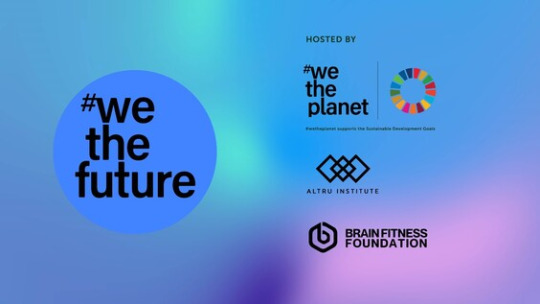
#philanthropists#wetheplanet#mental illness#future of mental heath care#social entrepreneurs#global health scientists#mental health experts#sdg3#uniting humanity in action#Brain fitness foundation#altru institute#panel discussion#Mind's potential#Artificial inteIligence#Neuroscience
0 notes
Text
Financing for Sustainable Development Report 2024 - Financing for development at a crossroads.
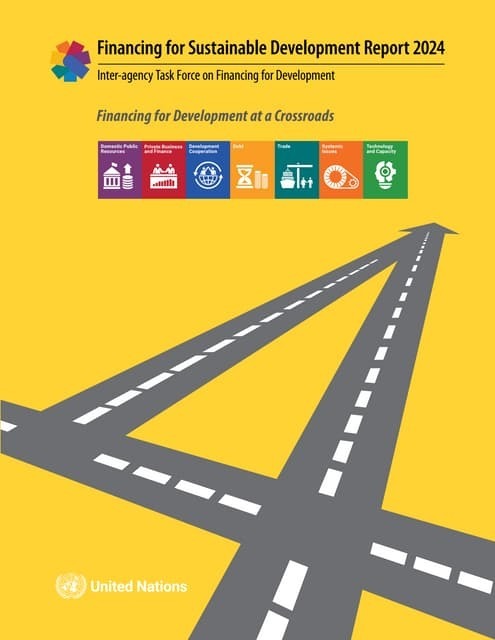
United Nations Department for Economic and Social Affairs
#united nations department of economic and social affairs#sustainable development goals#financing for development#agenda 2030#globalgoals#economic growth#sdgs#sdg1#sdg2#sdg3#sdg4#sdg5#sdg6#sdg7#sdg8#sdg9#sdg10#sdg11#sdg12#sdg13#sdg14#sdg15#sdg16#sdg17
0 notes
Text
Can Access to Published Research Help Local Science and Innovation?
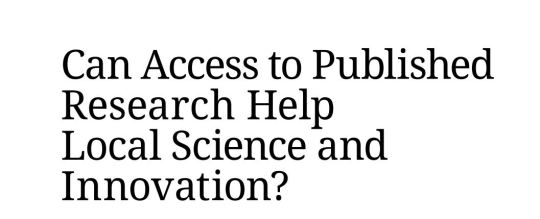
Low-cost access to information can drive research and clinical trials in developing economies and contribute to SDGs. But different regions are affected in different ways. So how can low-performing institutions catch up?
So far, the public debate on access to medicine, neglected diseases, and patent-protected technology has underplayed the potential of access to information for economic development. Similarly, earlier research has revealed a startling gap between lower- and higher-income countries in terms of access to knowledge, with over half of medical institutions having had no subscriptions to academic literature in lower-income countries.
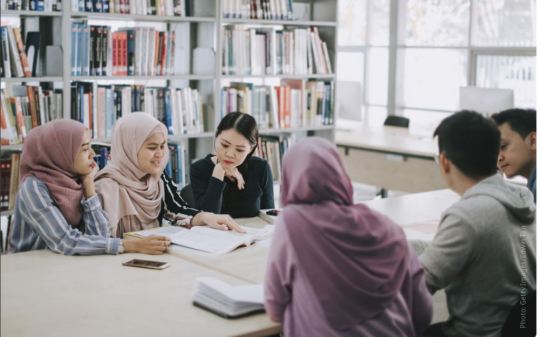
Several UN agencies and major academic publishers launched the Research
For Life (R4L) initiative to fill this gap. The World Health Organization (WHO) runs Health InterNetwork Access to Research Initiative (Hinari), one of fiveprograms under the R4L umbrella. It provides free or low-cost access to academic literature to at least 270,000 researchers in over 100 developing economies. This is for this WHO-led program alone. The entire initiative includes more than 21,000 peer-reviewed journals, 69,000 e-books and 115 data and other sources. Focusing on Hinari, a new WIPO research paper carried out empirical analysis of millions of data points to understand the strengths and weaknesses of the program. It is the first study to link access to scientific publications in developing countries to welfare along the science-to innovation pipeline. The report shows a local increase in health science publications of up to 75% after joining Hinari. Likewise, involvement in international clinical trials grew
by over 20%, suggesting that research and innovation in local institutions improved. Screening over 36 million scientific papers in PubMed, a repository of health science, the study found more than 167,000 papers coauthored by local researchers in developing economies, which cited clinical trials conducted worldwide over 30 years.

However, this uptick in science publishing and clinical trials only partially translated into global patents and inventions. The study attributes this to developing countries often lacking infrastructure and funding to transfer new findings into patented technologies. This gap reveals the remaining challenges in developing innovation and IP systems. Moreover, the study also finds that local context matters. Institutions in specific regions and those that already had a high research performance benefited most from the Hinari program. This also means that it is harder for others to catch up, despite better access to information.
Access to global knowledge counts on the ground
Empowering local researchers by providing access to information is
essential to their work. Researchers tend to target diseases that affect the local population and may be overlooked by researchers abroad. Enabling such access may help innovation in neglected diseases, mainly by connecting local teams to the global knowledge base. Aside from increased scientific activity, R4L also reports direct effects from Hinari regarding medical practice and patient care. The initiative quotes Dr. Nguyen Duc Chinh from Viet Duc Hospital, Hanoi, Viet Nam: “Good research, in short, leads to better patient care.” The doctor relied heavily on Hinari for his PhD on intestinal TB and surgical treatment. TB is prevalent in Viet Nam, but there is a relative lack of information on intestinal TB. “With the information and knowledge we obtain,” he says, “we feel more confident in practicing and implementing respected medical expertise from around the world.” Dr. Sami Hyacinthe Kambire at Kamboinsé Research Station, Ouagadougou, Burkina Faso, also found his research progressing faster and wrote grantwinning funding proposals thanks to Hinari. Before his institution adopted R4L, Dr. Kambire often devoted considerable time to research already
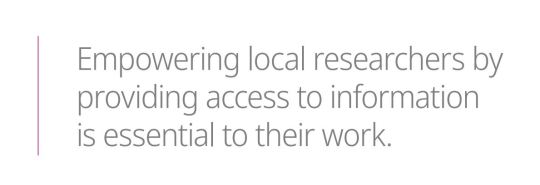
performed elsewhere. The initiative helped reduce these duplicative
research efforts in global health sciences and increase the quality of local teaching and education.
Access to information affects institutions differently
Despite the impacts, the study also found that the program effects differed for different parts of the world. Research institutions in the Carribean, Central Asia, Europe and Latin America benefited the most in generating new scientific knowledge. On average, their academic paper output increased by 80–100%. Regarding clinical trials, program participation is most impactful for East Asia, the Pacific, the Middle East and North Africa. Trial activity rose by up to 35% at institutions in these regions. That does not mean other regions did not gain from the program, but the impact has been less pronounced.
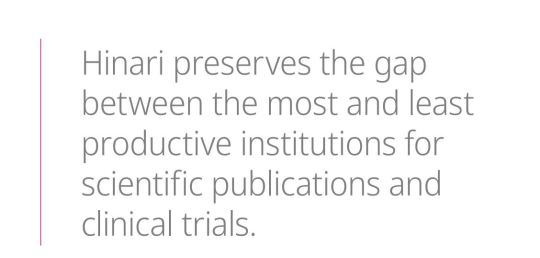
However, there are also institutional differences. Notably, the study
authors wanted to avoid comparing apples to oranges, because high- and low-performing research institutions differ. The high performers might be more likely to adopt the Hinari program in the first place. Seeing more publications might also be an outcome of the institutionsʼ selection into the program rather than an outcome of the program and better access to knowledge on the ground. To reveal the causal effects rather than mere correlations, the study compares different fields. This means health sciences supported by the program are matched against other research fields not supported by Hinari but conducted at the same institution.
How to make the most of access to information
Having ruled out the factors described above, the report suggests that program management could improve in two ways. First, it shows that already productive institutions benefit more from Hinari. For example, research institutions that have previously published academic papers see an average 60–70% increase in their publications after joining. This increase is only around 40% for institutions that rarely published scientific works previously. This suggests that Hinari preserves the gap between the most and least productive institutions for scientific publications and clinical trials. Under these conditions, the least productive institutions are, all else being equal, less likely to catch up. Still, the study ultimately supports the view that the Hinari program and the R4L initiative contribute to achieving the SDGs. They help boost research
and innovation capacity in developing economies and improve health
services (SDG 3) and education quality (SDG 4) at local institutions. They also aim to build industry, innovation and infrastructure, thus encouraging decent economic growth (SDGs 8 and 9).
The R4L initiative is also an excellent example of how private–public
initiatives can make a difference. It joins private sector stakeholders from
the global publishing industry and research institutions in the UN member states in a win–win situation. For research institutions, the initiative provides a practical solution. Their libraries and labs often need to be better resourced, and R4L improves access to information for students and researchers. It is also a smart way for industry stakeholders to show their corporate social responsibility and enhance their social impact in developing economies. It could also help grow local demand and the customer base in the long term.
Moreover, easing access to published research through initiatives like Hinari and WIPOʼs Access to Research for Development and Innovation (ARDI) program can significantly affect research output and contribute to desired social and economic outcomes laid out in the SDGs. UN agencies like the WHO and WIPO have been vital matchmakers. However, addressing existing gaps through schemes such as WIPOʼs Technology and Innovation Support Centers (TISCs) may help build local infrastructure and contribute to a vibrant IP and innovation system. In conclusion, the reportʼs findings on success and remaining challenges may inform stakeholdersʼ decisions to renew or change their commitment to R4L beyond 2025.

#patent-protected technology#Published Research#Local Science and Innovation#research and clinical trials#patented technologies#world i.p. day#26 april#R4L initiative#sdg3#sdg4#sdg8#sdg9#Technology and Innovation Support Centers (TISCs)#Access to Research for Development and Innovation (ARDI) program#ip and the sdgs
0 notes
Text
Financing social protection and care systems for the fulfilment of human rights, gender equality and poverty reduction (CSW68 Side Event).
UN Women is convening a high-level panel of diverse leaders for this CSW68 side event to explore how financing social protection and care systems can realize human rights, promote gender equality, and eradicate poverty amidst multiple crises.
Social protection and care systems are recognized as crucial tools to combat poverty (SDG1), ensure universal health coverage (SDG 3), and promote human rights and gender equality (SDG 5). However, cascading crises such as the COVID-19 pandemic, environmental emergencies, and conflicts have reversed progress on poverty eradication and gender equality, leaving 1 in 10 women in extreme poverty and triggering a cost-of-living crisis amid a looming debt distress. These shocks are intensified by underlying structural crises in jobs, livelihoods, and care. If current trends continue, by 2030, an estimated 8% of the world's female population – 342.4 million women and girls – will still be living on less than $2.15 a day. Against this backdrop, UN Women's corporate side event will explore how social protection and care systems can advance human rights, gender equality, and poverty eradication. As the world prepares for the 30th anniversary of the Beijing Declaration, the event aims to accelerate progress in expanding social protection, strengthening resilience, and integrating social protection with employment and livelihoods. Additionally, this event seeks to bridge thematic linkages between the priority theme of CSW68 'Accelerating the achievement of gender equality and the empowerment of all women and girls by addressing poverty and strengthening institutions and financing' with a gender perspective and the review theme on 'Social protection systems, access to public services and sustainable infrastructure for gender equality and the empowerment of women and girls.'

#access to care services#care economy#caregiving responsibilities#financing for gender equality#side events#women's empowement#sdg1#sdg3#sdg5#un women
0 notes
Text
Pulses: Nourishing Soils and People.
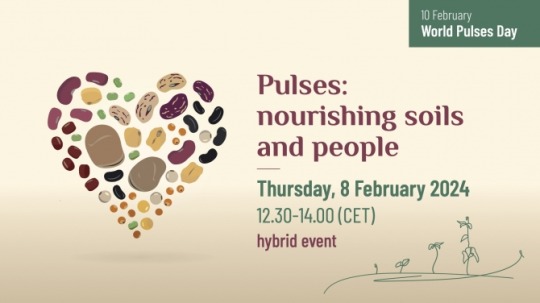
The United Nations General Assembly (UNGA), at its 73rd session in December 2018, endorsed the request made by the Permanent Representation of Burkina Faso for an annual observance of a World Pulses Day on 10 February. UNGA invited (A/RES/73/251) FAO to facilitate the observance of World Pulses Day. To mark the upcoming celebration, the event will be held on Thursday, 8 February 2024 with the objective of raising awareness about pulses and highlight their critical role in addressing the challenges of food security and global soil health, while improving human health and nutrition, and contributing to multiple Sustainable Development Goals, namely: Zero hunger (SDG-2); Good health and well-being (SDG-3); Responsible consumption and production (SDG-12) and Climate action (SDG-13).
#worldpulsesday#10 february#fao#sdg2#sdg13#sdg12#sdg3#virtual meeting#food and agricultural organization#pulses
0 notes
Text
youtube
Empowering India for #2030Goals | Alka Lamba on Politics, SDGs, and Public Role
Explore Alka Lamba's insights on India's path to #2030KaBharat, analyzing the roles of political parties, opposition, and the public in achieving #SDGGoals #AlkaLamba #SDGs
#2030kabharat#sdg 2030#sdg2030#sdg 17#sdg goals#sdgs#sdg6#sustainable development#sdg3#sdg4#sdginindia sdggoals#sdginindia#sdggoals#climate change#climate action#lifebelowwater#lifeonland#zerohunger#nopoverty#qualityeducation#Youtube
0 notes
Text
Sustainable Development Goals (SDGs): Understanding Their Significance
The SDGs consist of 17 interconnected goals that cover a wide range of issues affecting humanity and the planet. These goals include eradicating poverty, ensuring quality education, promoting gender equality, and combating climate change, fostering sustainable cities and communities, and many more. The SDGs emphasize the need for collaboration among governments, businesses, civil society organizations, and individuals to achieve these ambitious targets.
0 notes
Text
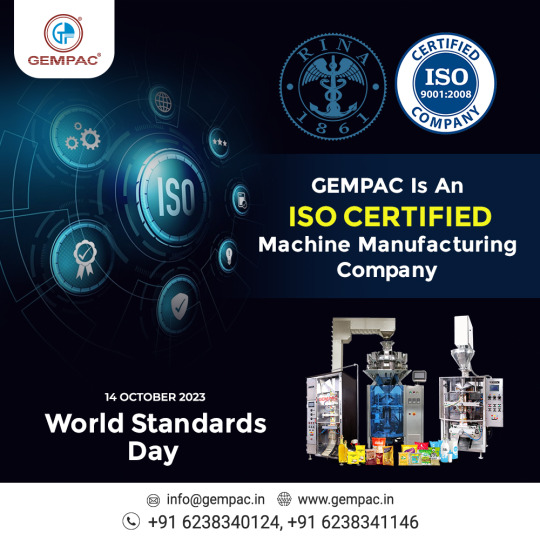
Gempac provides high-quality food packaging machines that are ISO-certified and globally recognized! Happy World Standards Day to our valued customers! 🌐🌟
0 notes
Text
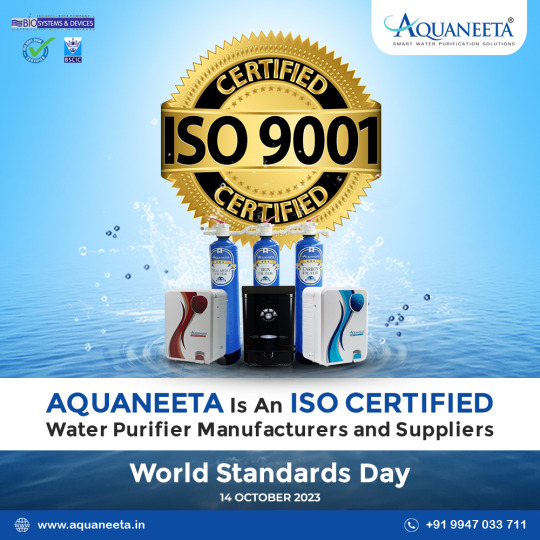
Aquaneeta is an ISO-certified organization having experience in all aspects of water treatment techniques!
Happy World Standards Day to all our valued partners and customers! 🌐
0 notes
Text

CFTech, a reputable ISO-certified company, serves as your trusted partner in manufacturing and supplying food processing machines.
Happy World Standards Day to all our valued partners and customers! 🌐
0 notes
Text
Increasing obesity and malnutrition.
The world faces a massive and complex problem of a double burden of malnutrition, where undernutrition coexists with overweight and obesity. In 2022, over one billion people aged five years and older were living with obesity, while more than half a billion were underweight. Malnutrition in children was also striking, with 148 million children under five years old affected by stunting (too short for age), 45 million suffering from wasting (too thin for height), and 37 million overweight. The latest edition of the World Health Statistics report further highlights the significant health challenges faced by persons with disabilities, refugees and migrants. In 2021, about 1.3 billion people, or 16% of the global population, had disability. This group is disproportionately affected by health inequities resulting from avoidable, unjust and unfair conditions.
Access to healthcare for refugees and migrants remains limited, with only half of the 84 countries surveyed between 2018 and 2021 providing government-funded health services to these groups at levels comparable to their citizens. This highlights the urgent need for health systems to adapt and address the persisting inequities and changing demographic needs of global populations.
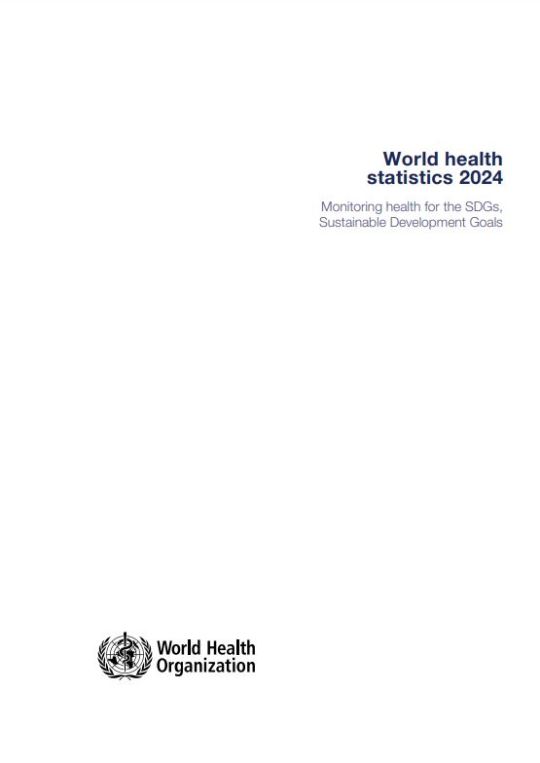
#world health organization#world health statistics#health investment#noncommunicable diseases#infectious diseases#pandemic#health data#healthcare system#monitoring health for the sdgs#sustainable development#sdg2#nutrition#sdg3#health#health statistics#health equity
0 notes
Text
PM Hasina Honored for ‘Community Clinic Model’ in New York
Bangladesh Prime Minister Sheikh Hasina was recently honored with the prestigious Global Women’s Leadership Award in New York for her outstanding contribution to global healthcare. Recognized for her innovative community clinic model, Hasina has transformed the healthcare industry in Bangladesh, providing basic healthcare to the underprivileged in the country. The community clinic model, which started in 1998, has been instrumental in providing primary healthcare to the rural population of Bangladesh. The model ensures that the clinics are located in easily accessible areas, providing medical care to people living in remote areas that are often ignored by the government. Today, the community clinic model has become a gamechanger in the healthcare industry, with over 18,000 clinics spread across the country. PM Hasina’s efforts in the healthcare sector have not only helped to improve the health of the people in the country but have also led to significant improvements in the country’s socio-economic conditions. Her work has been lauded by the international community, and the Global Women’s Leadership… Join our website for more details: Press Xpress
0 notes
Text
Assessing the progress of all 193 United Nations Member States on the SDGs.

Sustainable Development Report 2023 ''Implementing the SDG Stimulus'' Read the full report
#SDG Stimulus#globalgoals#agenda 2030#sustainable development goals#sdg2#sdg8#sdg11#sdg4#sdg3#sdg6#sdg10#sdg12#sdg13#sdg14#sdg15#sdg16#sdg17#sdg5#sdg1#sdg9#SDG Indicator
0 notes